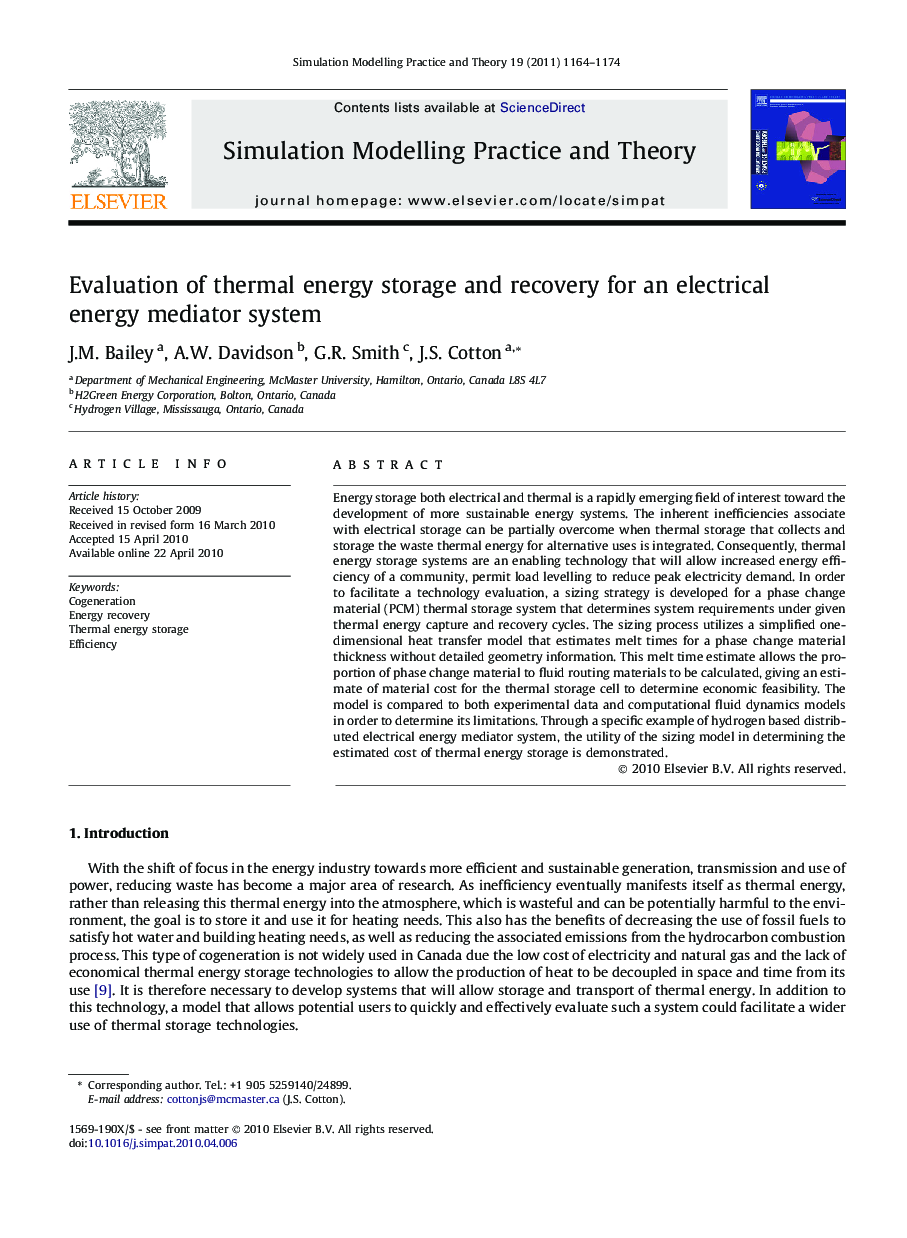| Article ID | Journal | Published Year | Pages | File Type |
|---|---|---|---|---|
| 492350 | Simulation Modelling Practice and Theory | 2011 | 11 Pages |
Energy storage both electrical and thermal is a rapidly emerging field of interest toward the development of more sustainable energy systems. The inherent inefficiencies associate with electrical storage can be partially overcome when thermal storage that collects and storage the waste thermal energy for alternative uses is integrated. Consequently, thermal energy storage systems are an enabling technology that will allow increased energy efficiency of a community, permit load levelling to reduce peak electricity demand. In order to facilitate a technology evaluation, a sizing strategy is developed for a phase change material (PCM) thermal storage system that determines system requirements under given thermal energy capture and recovery cycles. The sizing process utilizes a simplified one-dimensional heat transfer model that estimates melt times for a phase change material thickness without detailed geometry information. This melt time estimate allows the proportion of phase change material to fluid routing materials to be calculated, giving an estimate of material cost for the thermal storage cell to determine economic feasibility. The model is compared to both experimental data and computational fluid dynamics models in order to determine its limitations. Through a specific example of hydrogen based distributed electrical energy mediator system, the utility of the sizing model in determining the estimated cost of thermal energy storage is demonstrated.
